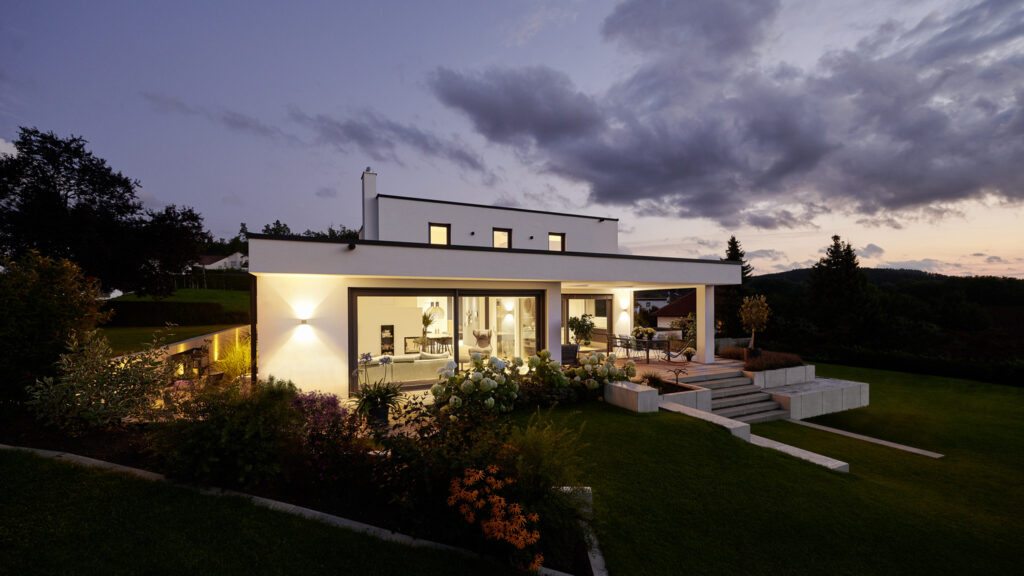The article was published in Octogon Deco 2023/1.
Nowadays, the smart home is undoubtedly a kind of catchphrase, and people's minds are mostly filled with a multitude of colour-temperature adjustable light bulbs and various devices connected to wifi. But are we really seeing the point of smart homes? That's what we asked Gergely Turbucz, project manager at Elektro-Kamleithner, who shared his almost two decades of experience in the field.
Am I right in assuming that, from a professional point of view, building automation is in many ways different from what we as average people think about it?
Although the concept has become known and popular in recent years, building automation, smart home as a system, has a 35-year history. Over the last decades, our homes have gradually become more and more complex as more and more devices have been installed and new features have been added (e.g. electric blinds, air conditioning, underfloor and wall heating, etc.). There is a need for a system that combines the operation of these devices and functions in a way that they optimally support each other and simplify people's daily lives.
For example, by combining shutter control, solar tracking, lighting control, heating and cooling control in one system, we can save energy and therefore money. This level of electrical installation provides a higher level of energy efficiency and comfort.
What were the tasks and functions that had to be combined and solved by creating the complex system?
Basically, the lighting of buildings, shading technology, heating and cooling control, ventilation technology, which was expanded with the progress of time to include access control, sound control, A/V (audio-visual) systems. All these areas have been integrated into building automation, which can control them within a single system. Perhaps the most obvious way of explaining the need for building automation is to look at the way lighting technology works. The 1980s were characterised by separate, compartmentalised rooms, and the lighting technology was adapted to these, with a switch at the entrance, plus a chandelier and a wall light that had to be switched. With the development of space organisation and lighting technology, the wall sections where switches can be installed have disappeared, and the remaining spaces have to be fitted with more fittings.
Let's face it, 4-5 light switches next to each other is not a very aesthetic solution and does not necessarily fit into a quality space designed by an interior designer or decorator. Our operators (Berker, Ekinex, Luxorliving) can easily control the different areas listed above in one device, and the design chosen will fit exactly into the space you have in mind, as aesthetics are a primary consideration for the brands of light switches we sell, alongside the use of quality materials.
Nowadays, it is clear that there is a demand from users to equip their homes with building automation?
Everyone has an idea of what a smart home is and the market is very saturated with different illusory solutions, but it is important to keep in mind that automatic coffee making is one aspect of waking up in the morning, but the key is to combine energy efficiency and comfort aspects through control. A really important need is, for example, to be able to turn off all the lights when leaving the home with a single movement, or to have the heating on low when ventilating or opening windows.
What are the advantages of Elektro-Kamleithner's system in terms of energy efficiency?
In the context of the energy crisis, we have been asked by many people how to make operations more efficient and reduce costs, even in a large-scale building. Since the building automation system we use (KNX system) is capable of individual temperature control per room, energy savings of up to 30% can be achieved. This is the case whether or not windows have been replaced, façade insulation has been installed or a heat pump has been installed. If all these things are done, the savings are multiplied. But the most cost-effective solution, with the lowest investment cost and the shortest payback period, is building automation. Our company has more than 20 years of professional experience and numerous references, both in the field of family houses and public buildings (nursery, school, municipal building, hotel, office building, industrial hall, etc.), providing support from the design stage through the entire process.

